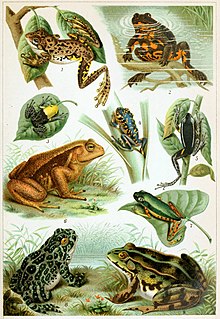Eisentraut's pipistrelle is a species of vesper bat in the family Vespertilionidae. It is found in Cameroon, Democratic Republic of the Congo, Kenya, Somalia, and Uganda. Its natural habitats are subtropical or tropical dry forest, subtropical or tropical moist lowland forest, subtropical or tropical mangrove forest, and subtropical or tropical moist montane forest.
The yellow serotine is a species of vesper bat.
The white-winged serotine is a species of vesper bat.

The singing quail is a species of bird in the family Odontophoridae. It is found in Belize, El Salvador, Guatemala, Honduras, and Mexico. Its natural habitats are subtropical or tropical dry forest, subtropical or tropical moist lowland forest, and subtropical or tropical moist montane forest.

The rufous-headed chachalaca is a species of bird in the family Cracidae. It is found in Colombia and adjacent Ecuador and Peru. Its natural habitats are subtropical or tropical dry forest, subtropical or tropical moist lowland forest, subtropical or tropical moist montane forest, subtropical or tropical dry shrubland, and plantations. It is threatened by habitat loss.
Leptodactylus ventrimaculatus is a species of frogs in the family Leptodactylidae.
Ptychadena neumanni is a species of frog in the Ptychadenidae family. It is endemic to Ethiopia.

The white-necked hawk is a species of bird of prey in the family Accipitridae.

The pink-headed imperial pigeon is a species of bird in the family Columbidae found in the Lesser Sunda Islands of Indonesia. Its natural habitats are subtropical or tropical moist lowland forests, subtropical or tropical mangrove forests, and subtropical or tropical moist shrubland. It is threatened by habitat loss.

The Maranon pigeon is a species of bird in the family Columbidae. It is found in Peru and southern Ecuador. Its natural habitats are subtropical or tropical dry forest, subtropical or tropical moist lowland forest, subtropical or tropical moist montane forest, and plantations. It is threatened by habitat loss.

Hombron's kingfisher or the blue-capped kingfisher is a species of bird in the family Alcedinidae endemic to the Philippines. Its natural habitats are subtropical or tropical moist lowland forest and subtropical or tropical moist montane forests. It is threatened by habitat loss.

The southern martin is a species of bird in the family Hirundinidae.
The Peruvian martin is a species of bird in the family Hirundinidae. It is found in Peru and far norther Chile.
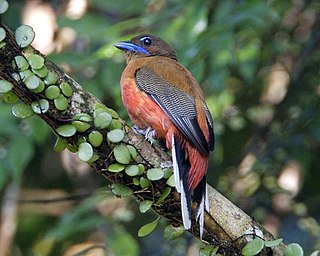
The scarlet-rumped trogon is a species of bird in the family Trogonidae. It is found in Brunei, Indonesia, Malaysia, Myanmar, and Thailand. Its natural habitats are subtropical or tropical moist lowland forest, subtropical or tropical swamps, and subtropical or tropical moist montane forest. It is threatened by habitat loss.
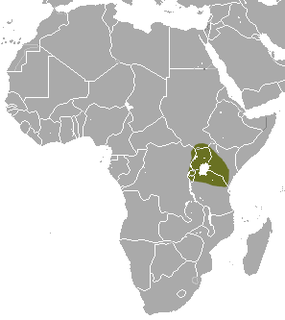
Jackson's shrew is a species of mammal in the family Soricidae. It is found in Burundi, Democratic Republic of the Congo, Kenya, Rwanda, South Sudan, and Uganda. Its natural habitats are subtropical or tropical moist lowland forest, subtropical or tropical moist montane forest, and heavily degraded former forest.
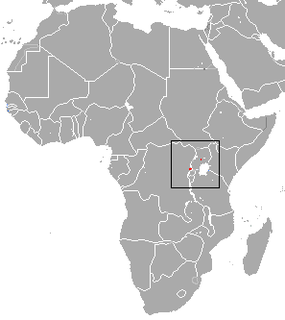
The tarella shrew is a species of mammal in the family Soricidae. It is found in Democratic Republic of the Congo and Uganda. Its natural habitats are subtropical or tropical moist lowland forest and subtropical or tropical moist montane forest. It is threatened by habitat loss.

The greater large-headed shrew is a species of mammal in the family Soricidae. It is found in Burundi, Democratic Republic of the Congo, Rwanda, and Uganda. Its natural habitats are subtropical or tropical moist lowland forest, subtropical or tropical moist montane forest, and swamps. It is threatened by habitat loss.
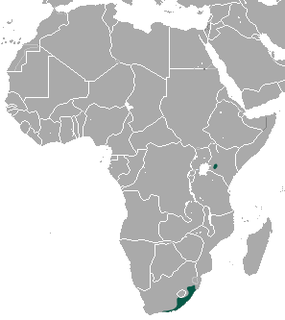
The least dwarf shrew is a species of mammal in the family Soricidae. It is found in Cameroon, Central African Republic, Democratic Republic of the Congo, Kenya, Nigeria, South Africa, Swaziland, Tanzania, and Uganda. Its natural habitats are subtropical or tropical moist lowland forest, subtropical or tropical moist montane forest, temperate grassland, subtropical or tropical dry lowland grassland, subtropical or tropical high-altitude grassland, and arable land.

Johnston's forest shrew is a species of mammal in the family Soricidae found in Burundi, Cameroon, the Central African Republic, the Republic of the Congo, the Democratic Republic of the Congo, Equatorial Guinea, Gabon, Rwanda, Tanzania, and Uganda. Its natural habitats are subtropical or tropical moist lowland forest and subtropical or tropical moist montane forest. It is threatened by habitat loss.

The climbing shrew is a species of mammal in the family Soricidae, which is found in subtropical Africa. It is found in Angola, Benin, Burundi, Cameroon, Central African Republic, Republic of the Congo, Democratic Republic of the Congo, Ivory Coast, Ethiopia, Ghana, Guinea, Kenya, Liberia, Malawi, Mozambique, Nigeria, Rwanda, Sierra Leone, South Sudan, Tanzania, Togo, Uganda, Zambia, and Zimbabwe. Its natural habitats are subtropical or tropical moist lowland forest, subtropical or tropical moist montane forest, and moist savanna.

